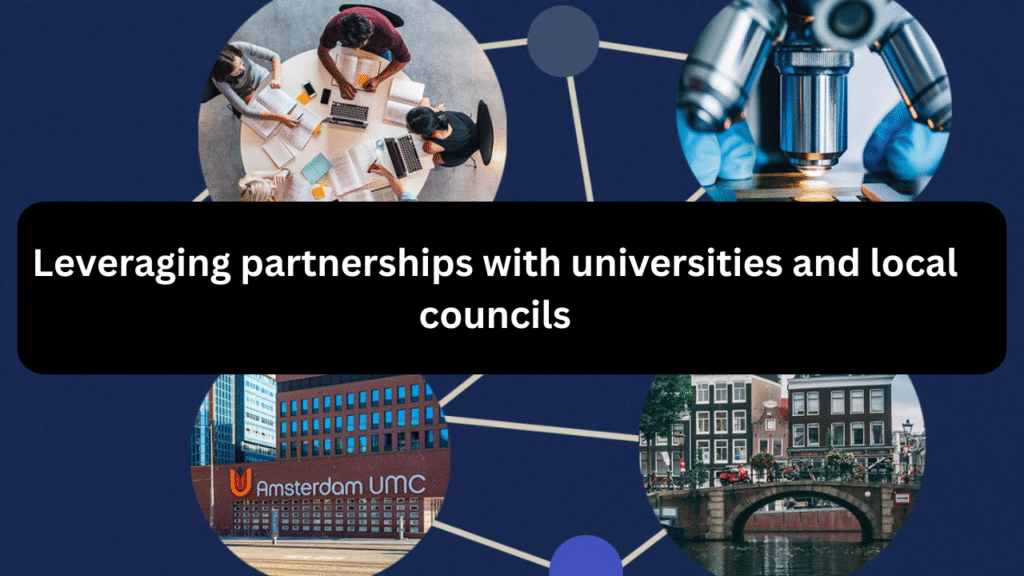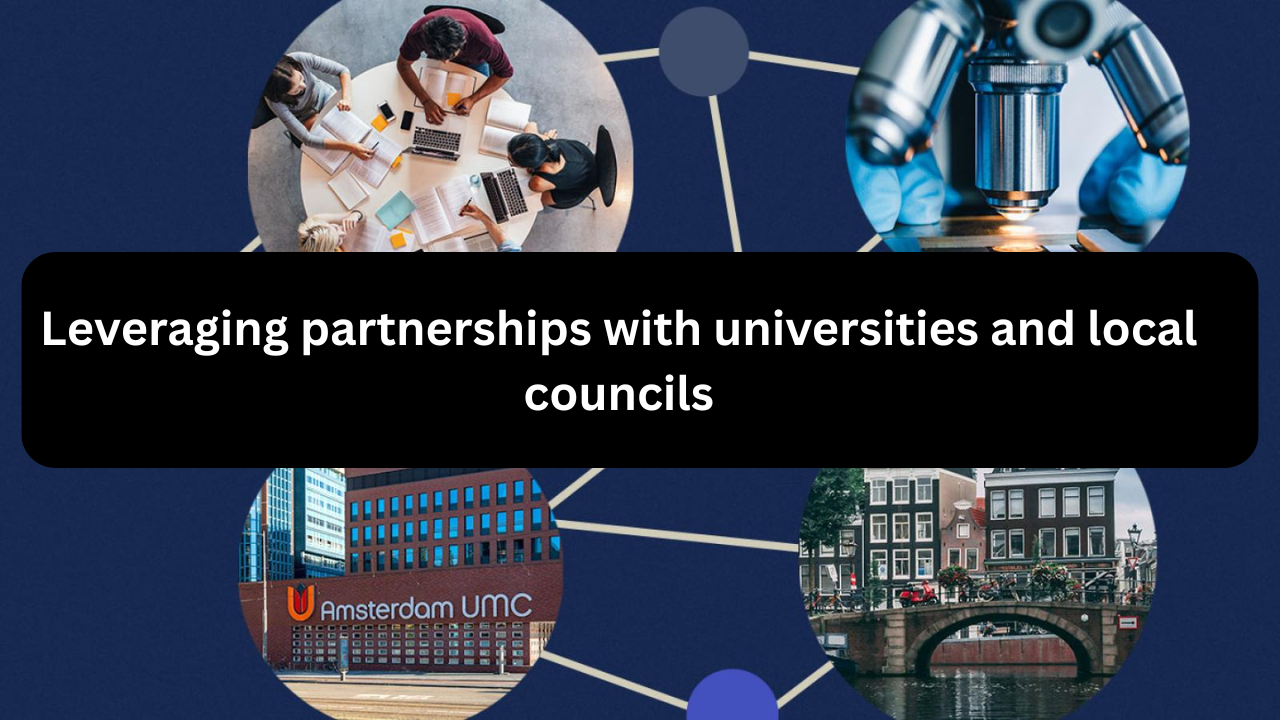
When it comes to scaling community-based or design-focused initiatives, strategic partnerships with universities and local councils can be game changers. These institutions offer access to expertise, funding opportunities, human resources, and a trusted platform to legitimize your efforts.
Whether you’re running a non-profit, a social innovation project, or an environmental design initiative, aligning with academic institutions and municipal bodies not only enhances credibility but also brings structured support to your mission.
In this article, we’ll explore how to effectively create and leverage partnerships with universities and local councils, the mutual benefits involved, and practical steps to initiate and sustain collaborations that produce tangible results.
Overview Table: Strategic Benefits of Institutional Partnerships
| Partnership Aspect | Value Delivered |
|---|---|
| Research and Data Access | Informed project design through local studies and academic research |
| Student and Faculty Support | Internships, volunteers, mentorship, and consultancy |
| Policy and Planning Support | Council endorsement, access to public spaces, and development approvals |
| Joint Funding Opportunities | Co-application for grants, CSR partnerships, and subsidies |
| Infrastructure and Space | Use of university labs, venues, council buildings, and public areas |
| Long-Term Sustainability | Inclusion in regional development plans and academic programs |
1. Identify Common Goals and Alignment
The foundation of any successful partnership is shared purpose. Begin by identifying how your project aligns with the goals of a university or local government body.
Universities may seek:
- Real-world case studies for research
- Community engagement opportunities for students
- Sustainable development projects for innovation labs
Local councils may look for:
- Citizen-driven urban solutions
- Environmental sustainability initiatives
- Public participation in policy implementation
Tip:
Frame your project in a way that helps them achieve their objectives too—not just yours.
2. Initiate Contact with Clarity and Value
Approach potential partners with a clear proposal and a mutually beneficial vision. Don’t just ask for help—offer collaboration.
Effective Contact Strategy:
- Draft a short partnership proposal (2–3 pages) outlining your mission, goals, community impact, and how the university/council fits in.
- Identify specific departments or officers—e.g., Urban Design Department, Social Work Faculty, or Municipal Planning Officer.
- Reach out via official channels, LinkedIn, email, or through mutual networks.
Include:
- Your past work or proof of concept
- A proposed partnership model (e.g., pilot project, research study, shared event)
3. Leverage University Resources
Academic institutions are rich with resources, including brainpower, innovation labs, and eager students looking for real-world experience.
Ways to Engage with Universities:
- Student Internships & Volunteering: Tap into students from architecture, environmental science, or social studies programs.
- Collaborative Research Projects: Co-design studies on urban sustainability, behavior change, or policy impact.
- Guest Lectures and Co-Events: Host shared seminars or awareness drives on campus to promote your initiative.
- Design Jams or Hackathons: Involve students in solving real problems using creative and design-based approaches.
Bonus:
Universities often have innovation funds and social entrepreneurship competitions—another potential funding avenue.
4. Activate Local Council Partnerships
Local councils offer access to space, policy, visibility, and decision-making power. If engaged properly, they can amplify your project far beyond its original scope.
Partnership Possibilities:
- Access to Land or Public Spaces: For gardens, installations, green corridors, or events.
- Permits and Endorsements: Faster approvals when backed by municipal offices.
- Inclusion in Local Plans: Get your initiative listed in neighborhood improvement or environmental planning documents.
- Support through Council Programs: Collaborate on waste management, smart city, climate action, or heritage restoration efforts.
Establish formal agreements through MOUs (Memorandums of Understanding) to solidify the collaboration.
5. Coordinate Stakeholder Communication and Roles
Clear communication channels and role definitions help avoid confusion and ensure long-term alignment.
Project Coordination Tips:
- Schedule regular meetings or review calls
- Assign liaisons from each partner organization
- Use collaborative tools like Trello, Slack, or Google Docs for shared tasks
- Maintain transparency with shared impact metrics and updates
Role Clarity Table:
| Stakeholder | Responsibility |
|---|---|
| Your Organization | Project execution, community engagement, documentation |
| University Partner | Research, student mobilization, data analysis |
| Local Council | Space allocation, permits, public communication |
6. Measure and Share the Impact Together
Co-branded outcomes increase legitimacy and attract future collaborators.
What to Document:
- Number of beneficiaries
- Community feedback and testimonials
- Environmental or social metrics
- Visual before/after project impact
- Academic findings (papers, reports, publications)
Publish these results jointly in newsletters, journals, local newspapers, and at public events or exhibitions.
7. Sustain and Scale the Partnership
A good partnership doesn’t end with one project. Use your initial success to build long-term collaborations.
Ideas for Sustainability:
- Establish a long-term campus-community lab or innovation hub
- Turn a one-time pilot into an annual program
- Co-develop toolkits or templates for replication in other regions
- Encourage universities to include your project in course curricula
3 Best One-Line FAQs
1. What benefits do universities get from partnering with community projects?
They gain real-world research opportunities, student engagement, and local impact.
2. How can I approach local councils for support?
Prepare a clear, community-benefiting proposal and request a meeting with the relevant department.
3. Are formal agreements necessary in such partnerships?
Yes, MOUs help define expectations and protect interests on both sides.
Conclusion
Partnering with universities and local councils creates a powerful support system that elevates your initiative’s impact, visibility, and sustainability. These collaborations offer more than just funding or space—they bring expertise, influence, legitimacy, and long-term allies. By approaching partnerships strategically, your project can grow from a local idea to a model for regional or even national change.

